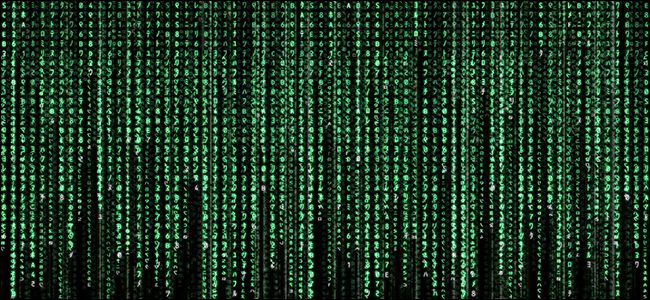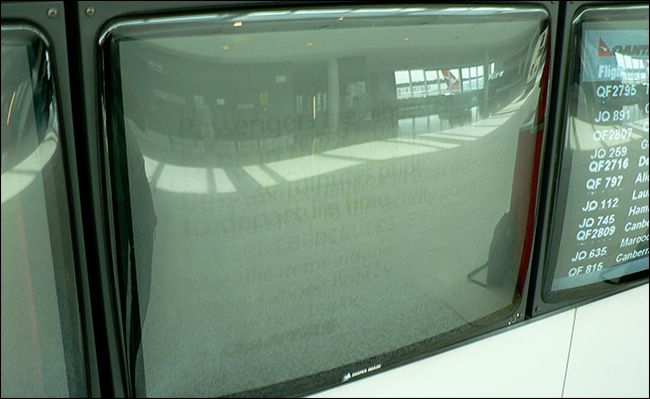Quick Links
I was walking through the dorms in 2003 when I saw it: a desk with three computer monitors, all with a Matrix screen saver scrolling green text. It's laughable in retrospect, but I thought it was just the coolest. Don't lie, you would have too.
These days I don't use a screen saver, and you probably don't either. There's a reason for that: screen savers haven't been truly useful for decades. Even in 2003, when I saw the Very Cool Dorm Room, screen savers were mostly decorative. Yet now, in 2017, all the major desktop operating systems still offer screen savers in their settings panels. They're disabled by default, sure, but they're still there after all these years.
It's a stunning example of how long legacy features live on in desktop operating systems, long after they're useful. But it might be changing.
Last month, everyone was freaking out about Paint supposedly dying, but Microsoft also listed screen savers as a depreciated function of "Themes". The feature will remain in Windows, but won't be seeing updates. Again, this makes sense: very few people still use screen savers, and their ongoing inclusion in operating systems has been more cosmetic than practical for decades. Why dedicate any resources to this obsolete art form?
Because while screen savers were practical at one point, that's what they've been through most of history: an art form.
Were Screen Savers Ever Useful?
Screen savers originally existed because of screen burn-in. This was a particular problem for early cathode ray tube (CRT) displays---the bulky boxes we all used before flat screens became affordable. Show the same thing on these displays long enough and it would "burn" into the display, leaving a ghost image that shows up all the time, even when the display is turned off. Here's an example from an airport terminal:
These ghost images were permanent, which sucked: you had to buy a new display or put up with the ghost image haunting whatever else you might be working on. You can read more about burn-in here.
Early computers began compensating for this effect. The Atari 400, released in 1979, would randomly change colors if left idle for too long. In 1983, John Socha, known for creating Norton Commander, released an IBM-compatible program called scrnsaver, which turned the screen blank after three minutes of inactivity. The Apple Lisa, released that same year, included something similar.
Changing the color, or turning the screen black, was effective. But it wasn't fun. By the late 80s programmers realized that animations could prevent screen burn in, and people loved it.
Flying Toasters and General Whimsy
Animated screen savers were incredibly popular in the early 90s. How popular? Well, a $30 collection of screen savers called After Dark 2 was a best selling piece of software for both Mac and Windows computers. The various animations, which fit on a single floppy disk, ranged from a city skyline at night to a bunch of flying toasters. This video shows the entire collection:
With market demand for such animations developers became increasingly ambitious. Johny Castaway, released in 1992 by Sierra On-Line, told a story of sorts. Johny was stuck on a desert island, and over users would see several Gilliganesque near escapes. It would take months of watching to see everything, and there were even easter eggs for various holidays.
This all proved so popular that both Windows and Mac computers eventually came with a decent selection of screen savers by default. If you used a Windows computer in the 90s, you probably remember this freaking maze:
There was also 3D Pipes, and the various other screen savers that matched with "themes" that skinned your entire computer with things like space and haunted houses.
These look silly in retrospect, but at the time people loved starting at them. They were like a fire, or a Zamboni: compelling to watch, but in a way that's difficult to explain.
Not Useful, But Still Here
By the early 2000s the problem of screen burn in was largely solved. Computers were capable of turning off the display after a certain amount of time, which is a more energy efficient way to prevent the problem. And LCD displays were largely invulnerable to screen burn, and included various features that made it unlikely in any case.
Still, people kept using screen savers. Why? Because people liked them. Screen savers gave computers a life of their own, something to do when humans aren't around---like Woody and Buzz in Toy Story. People liked that. This appreciation, combined with the idea that these animations served some purpose, was enough to keep people using them well into the 2000s.
But it wasn't meant to last. In 2017, computers no longer use screen savers by default, and on mobile Android and iOS have never even offered them. Which makes sense: if you care about battery life, you should turn off the display, not show a superfluous animation.
That's also true for laptops, yet the settings panel for screen savers remain. I wonder how much longer they'll be there?
Photo Credit: Isaiah van Hunen, Pengo


